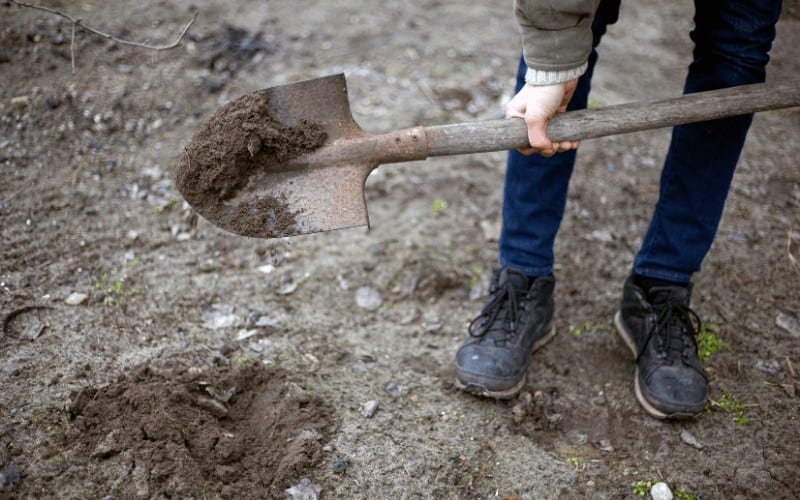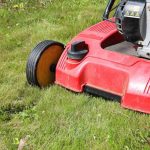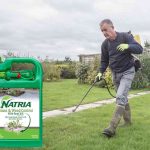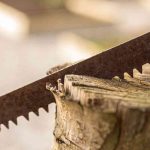We independently research and recommend the best products here. This article contains affiliate links. If you make a purchase after clicking on a link, we may earn a little commission at no extra cost to you.
As a gardener, you may be tasked with the dirty job of digging a small trench. The last thing you need is the cost of renting a mechanical trencher as so many homeowners prefer the manual use of spades or shovels.
This is because planting a bunch of vegetative bedding plants or laying a drainage tile does not justify all that expenses. Many people use the names "spade" and "shovel "conversely, without knowing their difference and functions.
Whether you are a pro gardener or a homeowner, you agree that a useful tool does gardening — and many other outdoor tasks — a lot quicker, stress-free, and fun.
So, read on to find out everything you need to about the key differences between drain spade vs trenching shovel to get the most digging experience.
Table of Contents
Drain Spade Vs Trenching Shovel: An Overview

Humans have been digging up the soil from time immemorial. Throughout that time, the first gardeners had to work with rough shovels and spades crudely made from the bones of dead animals.
Now with the rise of evolution today, spades and shovels come in multiple sizes, shapes, and functions.
However, owing to the resemblance in their looks at first glance, many people use them interchangeably and not as the manufacturer intended.
There is very little noticeable difference between a drain spades vs trenching shovel in terms of the material make up. The material buildup of both is characterized by stainless steel or carbon blades and with fiberglass or wood handles.
Their weight relies on the manufacturing materials, and so is their cost. Cost and weight will also vary depending on the intended use of the tool; those designed with distinctive features for specialty purposes may generally cost more.
The main differences between drain spades and trenching shovels are seen in the blade, handle/shaft, and their ability to get each specified task done quickly and efficiently.
It is true that with a standard digging spade or shovel, you can do your task without any problems. However, if you lack enough technical know-how and experience, you may be in for a very long ride with a series of avoidable backaches.
The blades of both drain spade and trenching shovel are also known as the scoop and are used to cut through roots, soils, or sod and to clear gravel soil, and sand, etc.
The broader the blade, the more material you tend to move. However, if the blade is too broad, you may get fatigued quickly from trying to lift a full load.
The Sharply pointed blades are more precise when cutting through hard grounds or sturdy materials like roots, while flat blades are excellent for edging and lifting loose material.
Knowing and choosing the right tool for your job will save you the pain of persistent sore in a heartbeat, and it is all the difference you need to make between long hours of hard labor or fun and straightforward task.
As garden experts, we know that a single regular garden spade or shovel is not a one size fit all tool for all your outdoor trenching needs.
Although it may seem that way, it may only see you through a foot before causing you aches; that is why we put together all the details about drain spade vs. trenching shove to save you from stress.
So read on to learn about the similarities, differences, functions, what to buy, if you are on the lookout, and a few picks to help you ease your choice making process.
What is a Trenching Shovel Used For?
Trenching shovels are designed to dig and empty trenches. They feature a sharp, round and pointy tip and squared edges to yield clean trench walls and lessen disruption of the surrounding soil.
They are necessary for laying drainage tiles, irrigation pipes, digging fertilizer trench, and removing deeply-rooted plants.
A trenching shovel has a wider blade that is curved inwards from left to right. The blade shape and length can vary, depending on the intended purpose –
Get down in the dirt with the right shovel for your garden and landscaping needs.
You'll discover some shovels with saw-tooth edges, edges down the sides, and extra-long blades. Generally, the shovel has more giant blades than that found on spades.
When digging a trench, the edge of the shovel influences how effectively you can dig. A shovel with a long, tight head permits you to dig gravely while limiting soil load.
A shovel with a rounded point cuts through soil most effectively, while a flat end shovel will clear out the trench.
A long handle also has significant influence, a D-molded handle shields your hands from slipping, and the roll step at the head of the shovel lets you effectively drive the sharp edge into the dirt with your foot.
What is a Drain Spade used for?
Drain spades, otherwise called tile spade, are extremely thin with little bent sides and a circular tip, which makes them ideal for exact spot work like adding healthy blossoms to set up beds, clearing existing trenches, and transplanting smaller plants.
Generally, a spade features a nearly flat blade with straight edges. It's smaller than a shovel, although the size varies based on the intended use. The shaft and blades tend to align always rather than forward.
A drain spade or tile spade, usually called a sharpshooter, has a D-handle and a long, thin edge - 4 to 5 inches wide - with a rounded and rolled edge.
This feature helps to stamp out the edges of your trench, going down the two sides, pushing the sharp blade in, and turning it back to release the dirt and eliminate rocks and cut through roots.
Conclusion
Although you can manage to get your task done with only a drain spade or a trenching shovel, your gardening will be more fun and less strenuous if you have both.
This article features enough similarities and differences between a drain spade vs. trenching shovel for you to know that a standard garden drain spade does not effectively do the work of a trenching shovel and vice versa.
Because of all the factors to consider when digging a trench, having the two tools handy is always best.




